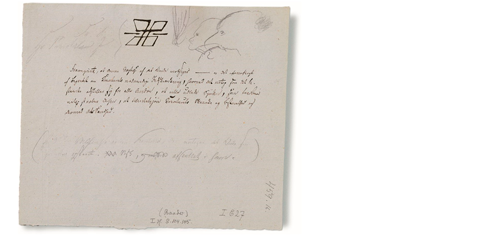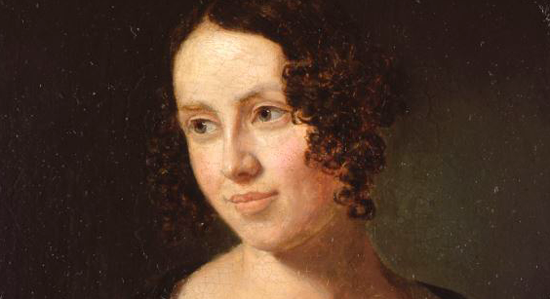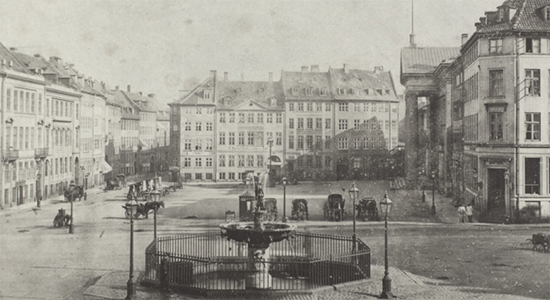Engagement
THEOLOGY STUDENT
Sketch of Søren Kierkegaard, by a member of his extended family, Niels Christian Kierkegaard, in 1838.

THEOLOGY STUDENT
Immediately after completing his preparatory schooling in 1830, Kierkegaard began to study theology at the university, but he used much of his time reading philosophy and romantic literature. As a student he published a string of articles in newspapers and academic journals, and in 1838 he published a small book, From the Papers of One Still Living, Published Against His Will, an extremely harsh review of Hans Christian Andersen’s novel, Only a Fiddler. After reading Kierkegaard’s critique, Andersen writes that he wandered around “in a haze” and needed to take some “cooling powders” in order to regain his normal mental temperature.
The Openhanded Student
From the woolen cocoon that the school boys called “Søren Sock” emerged a dashing fop, who seemed to be tailor-made for late romanticism. Taking loans and using credit—and completely out of step with the frugal ways of home—the young theology student developed extravagant habits, which included necessities such as chic jackets, fashionable hats, walking canes, silk scarves, gloves, café visits, good wine, cigars, pipe tobacco, theatre performances and coach rides. In 1836 alone, the openhanded student worked up a debt of 1,262 rigsdalars, which was about the same as the annual wage of a college professor.
The Cursed Family
The extravagant lifestyle was presumably—also—a reaction to the somber events at home. Before Søren Aabye could celebrate his 21st birthday, he had lost five siblings and his mother. His father interpreted the deaths as an act of revenge from a God who hadn’t forgotten that when the wealthy businessman was still a young shivering shepherd, he had once climbed a small hill on the Jutland heath and cursed God. Like Job, he thought he was to lose all his children in or before their 33th year, Jesus’ age.

The Maid’s Last Son
In addition to the episode on the hill, one can add the awkward fact that following the death of Michael Kierkegaard’s first wife, he made his maid pregnant. When Søren Aabye, the last child born to this same woman, was made aware of these circumstances, it was as if the ground began to quake beneath him:
"That’s when the great earthquake took place, the terrifying upheaval that suddenly forced upon me a new law of interpretation for all phenomena. That’s when I sensed that my father’s advanced age was not a divine blessing, but rather a curse." - (Papir 305. source: SKS.dk)
Even though the macabre curse hypothesis was disproven with his father’s death on August 9, 1838, Kierkegaard junior was so bewitched with the equation, with God as the great unknown, that on May 5, 1847, he noted in his journal:
"How strange that I have turned 34. It is utterly inconceivable to
- I was so sure that I would die before or on this birthday that I
could actually be tempted to suppose that my birthday was erroneously recorded and that I will still die on my 34th." (Journalen NB. Source: SKS.dk)


